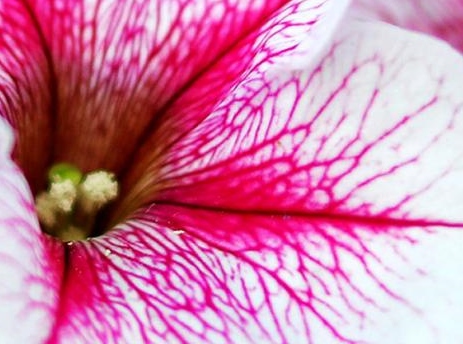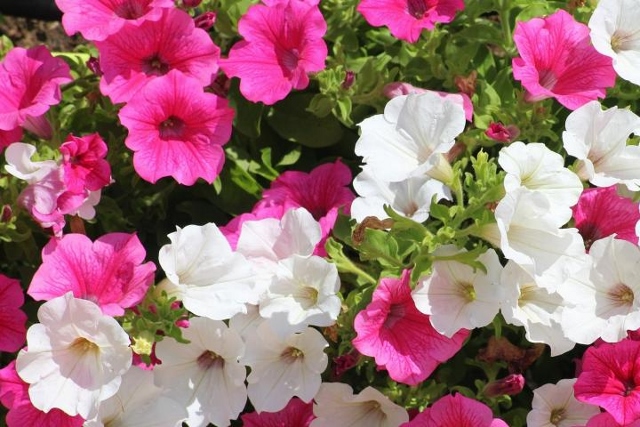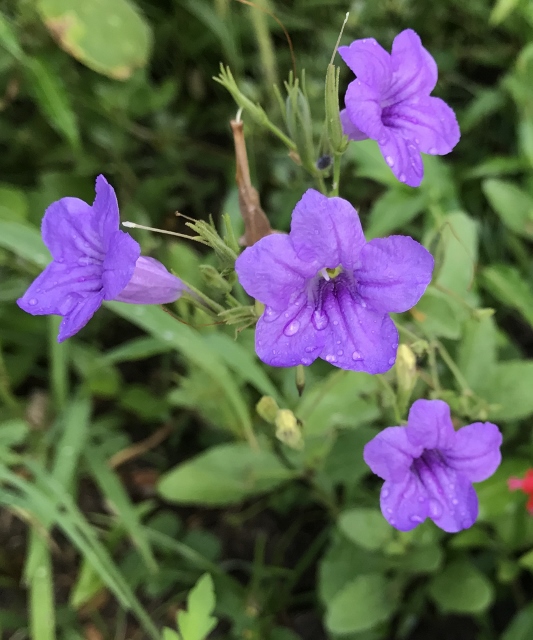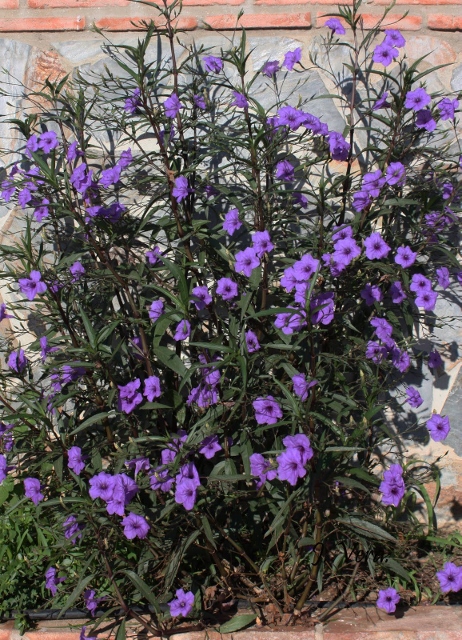
Previously, I brought you the dark, edible and wild side of certain nightshades. https://rgvctmn.org/blog/anitas-blog-nightshades-beneficially-questionable/ Recap: there are nearly 2,300 species of nightshade plants worldwide. They belong to the Solanacaea family of plants — most are toxic; the primary toxin is solanine.
Interestingly, this peculiar botanical family that includes plants ranging from exceedingly nutritious to dangerously poisonous also has a commercially lucrative species that is pretty as a petunia!
Petunias are one of the most familiar plants in the Solanacaea family and touted as the bestselling annual in retail garden sales. Native to South America, seeds were collected from plants in Argentina by a French botanist named Petun and introduced in Europe in the mid-1800s to much acclaim. It was only a matter of time for them to sweep across the United States, but not before a lot of experimentation.

Today, there are six main petunia types available commercially: grandiflora, multiflora, milliflora, wave, supertunia and Cascadia/surfinia. They come in just about any color you can imagine including multi-colored, striped, blotchy and those resembling whirligigs. Although fascinating now, petunias had humble beginnings. Initially, there were only two petunia varieties: white and purple; the plants were not nearly as robust. Although the initial petunias were popular when first introduced in Europe, it wasn’t long before breeders in Germany and England began crossing them to have more color variety and a heartier specimen — and look at them now!
Even though they are in the nightshade family, petunias are not poisonous to humans, dogs or cats — however, nor are they edible! Ingesting petunias is known to cause intestinal distress. I would think the pungent foliage would be off-putting to the palate; even so, the flower of the petunia is sometimes used as a garnish — but not to be eaten! I know, if you don’t know that, how would you know . . . if it’s on your plate?
Petunias have a somewhat sprawling growth habit, which is a trait that makes them great for planting in a hanging basket — which in turn is a valuable option for hummingbirds looking for nectar. On the ground, petunias don’t grow much taller than about a foot in height. Petunias attract butterflies as well as hummingbirds.
This is generally a blog about things native in the Rio Grande Valley, and I’ve taken a little sidestep to discuss a nonnative nightshade species. I believe a variety of plants in the garden can include nonnative species; it’s fine if it pleases the gardener and doesn’t harm the environment. As for cultivated petunias, they can but don’t readily self-propagate — and when they do, the new plants will most likely not be the same color and size as those initially planted due to the cross-breeding.
If it’s petunias you desire, here in the Valley we have wild petunias, Mexican petunias and other plants called petunias. Mostly, they are in the Acanthaceae family, not the toxic Solanacaea (nightshade) family. Remember our first master naturalist lecture about plants: trust the botanical name, not the common name? Searching through native plant books, asking Google: What’s the botanical name for (type in common name) and uploading a photo onto iNaturalist.org are all helpful ways to find a plant’s scientific name.
On the native side, wild petunias, also called Runyon’s violet wild petunia, Ruellia nudiflora var. runyonii [Ruellia runyonii], are the most common native variety of petunias in the Valley. Here’s some fun with terminology: Ruellia nudiflora flaunts dissilient seed distribution. The word means bursting apart — as in a seed capsule. Ruellia nudiflora, because of its robust seed dispersal propensity is prolific — and that’s a good thing! The species is a host plant to the pale-banded crescent, malachite, Texan crescent and white peacock butterflies and possibly others. It will bloom, prosper and propagate whether it has water, sun or shade and thrives even when totally neglected — attributes that could possibly make it the perfect plant: low maintenance, nectar for butterflies and hummingbirds and readily reseeds itself. It’s a beautiful upright plant with multiple blooms in near neon-purple brilliance; purple flowers have a special vibrant glow in the eerie light of misty twilight.

Mexican petunias, Ruellia brittoniana, are prevalent in the Valley, too, and readily available commercially. They are native to Mexico, Western South America and the Antilles. They are those tall-growing petunias with long, slim, dark green leaves.

Mexican petunias do not appear on data bases that list plants toxic to dogs, cats or other animals; most sources recommend not encouraging pets to eat garden plants at all — a practice I adhere to for myself. I don’t recommend eating from the wild, rather I always think it’s better (safer) to keep wild food options for the wild critters. Mexican petunias do have garden value; they attract butterflies, bees and hummingbirds.
Petunias, whether in the nightshade family or Acanthaceae family are colorful, add variety to the garden and are a good source of nectar.
I love the smell of petunias but hate that leggy quality when their season wanes.